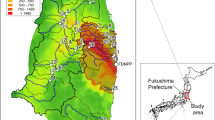Summary
This paper presents the results of radioecological investigation of Central Asian rivers.<Emphasis Type=”Bold”><Emphasis Type=”Italic”> </Emphasis></Emphasis>This work was done as part of the Navruz Project, a cooperative, transboundary river monitoring project involving rivers and institutions in Kazakhstan, Kyrgyzstan, Tajikistan, and Uzbekistan, and facilitated by Sandia National Laboratories in the United States. The study of waterborne radionuclides and metals concentrations in Central Asia is of particular interest because of the history of nuclear materials mining, fabrication, transport, and storage there, when it was part of the Soviet Union. This development left a legacy of radionuclides and metals contamination in some Central Asian regions, which poses a clear health hazard to populations who rely heavily upon surface water for agricultural irrigation and direct domestic consumption.
Similar content being viewed by others
Author information
Authors and Affiliations
Rights and permissions
About this article
Cite this article
Barber, D., Betsill, J., Mohagheghi, A. et al. The Navruz experiment: Cooperative monitoring for radionuclides and metals in Central Asia transboundary rivers. J Radioanal Nucl Chem 263, 213–218 (2005). https://doi.org/10.1007/s10967-005-0039-8
Issue Date:
DOI: https://doi.org/10.1007/s10967-005-0039-8




